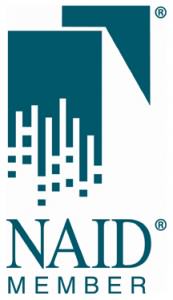
Data breaches are more common than you think. If you’re serious about protecting your company’s sensitive information, you need a shredding policy. Developing this policy will not only shield your business from potential risks but also ensure compliance with data protection regulations. Here are 10 ways to develop a shredding policy for your organization.
The Importance of a Shredding Policy
Security and confidentiality are paramount in any organization. A comprehensive shredding policy aligns with legislative requirements and safeguards sensitive information against unauthorized access. When employees understand the importance of this policy, they’re empowered to play a role in protecting company data.
Failing to implement a shredding policy can lead to detrimental consequences. Breaches harm your company’s reputation and erode customer trust. Furthermore, your business could face severe legal and financial repercussions. An effective shredding policy mitigates these risks, fostering a culture of security and responsibility.
1. Identify Key Stakeholders
When drafting your shredding policy, identify the key players within the organization who need to be involved. This includes upper management, IT professionals, legal advisors, and department heads. Their expertise and insights are crucial for crafting a comprehensive policy that incorporates a range of perspectives and addresses all possible scenarios.
By engaging these stakeholders, you establish accountability. Assign clear roles and responsibilities to ensure the policy is enforced and monitored effectively. Stakeholders will facilitate collaboration across departments, bridging communication gaps for a unified approach to information security within your organization.
2. Assess Current Shredding Practices
Before devising your shredding policy, evaluate your organization’s current practices. Identify strengths, weaknesses, and areas for improvement. This initial assessment provides insight into existing processes and highlights potential vulnerabilities that need to be addressed.
Consider the types of documents being handled in your business and determine the risk levels associated with each. Conduct thorough audits to analyze how confidential information is currently managed. Ensure you involve employees in this process to gain a full understanding of existing practices, fostering collaboration and collective ownership of responsibilities.
3. Determine What Needs Shredding
Not all documents require shredding, so it’s essential to establish clear guidelines. Start by identifying sensitive documents, such as financial records, personnel files, and proprietary information, that necessitate secure disposal.
Additionally, determine the storage duration for each type of document before shredding becomes essential. Some records may be required to be kept longer for compliance reasons, whereas others should be destroyed after their operational usefulness has expired. Communicate this information to all employees, making sure they understand the rationale behind the classifications and subsequent shredding requirements.
4. Develop a Document Retention Schedule
Creating a document retention schedule streamlines the shredding process. This schedule should outline the types of documents, their retention periods, and the appropriate shredding timeframes. This sets a consistent approach for handling confidential information while ensuring you remain compliant with relevant regulations.
Your schedule needs to address both physical and digital records. Inform employees of their roles in adhering to this schedule, emphasizing the importance of timely document disposal for security reasons. Regularly review and update the retention schedule as needed to accommodate changes in your business and industry standards.
5. Choose the Right Shredding Method
Choosing an appropriate shredding method is crucial to protecting sensitive information. Options include on-site shredding, where documents are destroyed at your premises, or off-site shredding via a secure service provider. Each method has its advantages, so consider factors such as cost, convenience, and security when making your decision.
For instance, on-site shredding may offer convenience and instant security, while off-site services often provide ease and efficiency for large-scale shredding requirements. Regardless of your choice, be sure that the selected method aligns with your company’s requirements and adequately safeguards data.
6. Establish Secure Collection Points
To support your shredding policy, establish secure collection points for documents awaiting shredding. Strategically place locked containers throughout your office, making it easy for employees to dispose of sensitive documents securely.
Make sure these containers are regularly emptied by authorized personnel following a predefined schedule. Secure collection points create a sense of responsibility among employees, demonstrating how their actions contribute to maintaining organizational security. Address any potential issues and provide appropriate solutions to guarantee safe disposal at each step.
7. Train Employees on the Shredding Policy
Employee buy-in is crucial for any policy’s success. Comprehensive training ensures staff members understand the importance of document shredding and how to adhere to established guidelines. Regular workshops serve as an opportunity to reiterate the implications of non-compliance and demonstrate practical steps for maintaining confidentiality.
Interactive training sessions engage employees, reinforcing the concept that safeguarding sensitive information is everyone’s responsibility. Provide reference materials and clear instructions on handling and disposing of documents, and offer ongoing support as they familiarize themselves with the policy.
8. Monitor and Enforce the Policy
System monitoring and enforcement are essential to guarantee the effectiveness of a shredding policy. Regular audits and inspections verify that employees are adhering to protocols while identifying areas needing improvement.
When discrepancies arise, feedback and corrective action become critical for reinforcing policy adherence. Offer ongoing support, adjusting your approach as necessary to address any emerging challenges over time. A proactive stance ensures organizational information security remains a top priority.
9. Revise and Update Regularly
A shredding policy must remain adaptable. Regularly review and update it, reflecting any changes in regulations or company operations. Continual updates keep your policy relevant, upholding the integrity of your organization’s information security practices.
By revisiting policy effectiveness periodically, you can address new vulnerabilities and capitalize on emerging technologies. Encourage open dialogue with stakeholders to foster a culture of continuous improvement. An adaptable shredding policy bolsters your organization’s resilience against data breaches, supporting growth and long-term success.
10. Outsource to Professional Services
While developing and maintaining an in-house shredding system can be effective, outsourcing to professional shredding services offers distinct advantages. These experts provide a range of secure solutions, such as scheduled pick-ups, on-demand shredding, and comprehensive data destruction options that are compliant with industry standards.
By leveraging their specialized equipment and trained personnel, your organization can ensure that sensitive documents are handled and destroyed efficiently and securely. Professional services can also offer certification of destruction, providing your company with documented evidence of compliance.
Position Your Business for Long-Term Success
Adopting a shredding policy is vital, as equipping your organization with the right processes protects your valuable information and ensures compliance with industry standards. Understanding these 10 ways to develop a shredding policy for your organization will position you for long-term success and security.
Do you need secure file destruction for your ongoing operations? Intellishred is leading the way, helping to create a business landscape where your data is safe. Our expert services allow your organization to maintains its commitment to secure, responsible information management practices.







